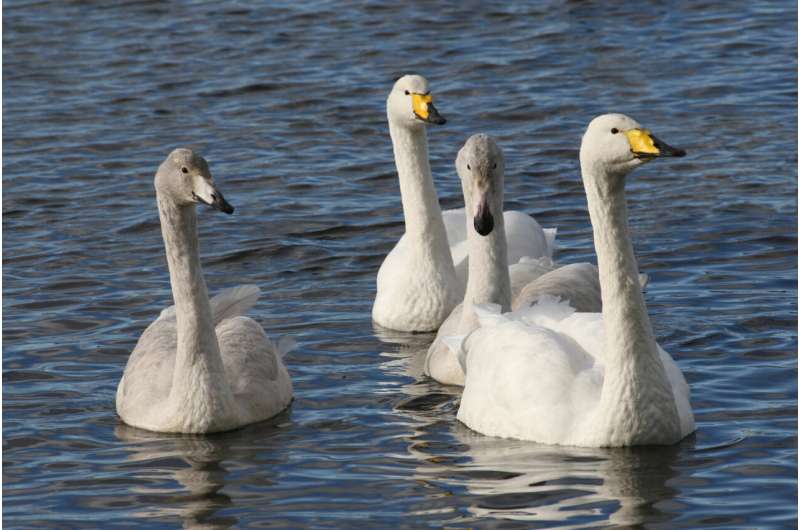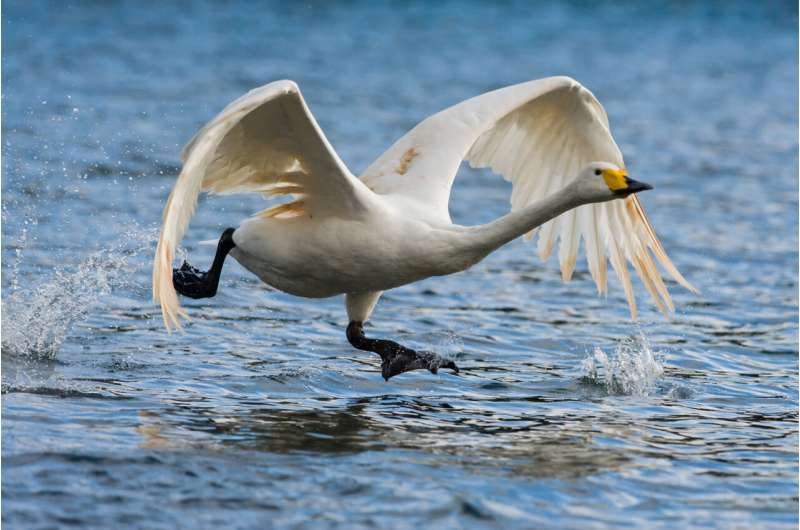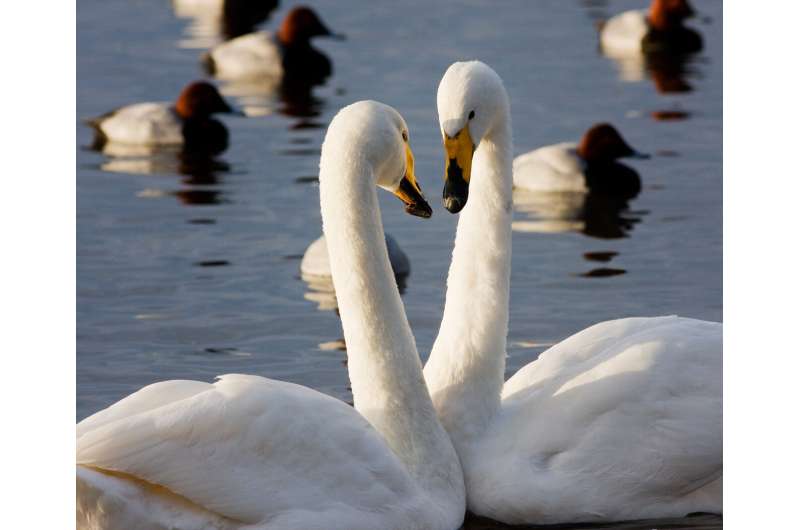This article has been reviewed according to Science X's editorial process and policies. Editors have highlighted the following attributes while ensuring the content's credibility:
fact-checked
peer-reviewed publication
trusted source
proofread
Swan populations grow 30 times faster in nature reserves, shows study

Populations of whooper swans grow 30 times faster inside nature reserves, new research shows.
Whooper swans commonly spend their winters in the U.K. and summers in Iceland.
In the new study, researchers examined 30 years of data on swans at 22 U.K. sites—three of which are nature reserves managed by the Wildfowl and Wetlands Trust (WWT). Their paper, published in the journal Proceedings of the National Academy of Sciences, is titled "Demographic rates reveal the benefits of protected areas in a long-lived migratory bird."
Survival rates were significantly higher at nature reserves, and population growth was so strong that many swans moved to non-protected sites.
Based on these findings, the research team—led by the universities of Exeter and Helsinki—project that nature reserves could help double the number of whooper swans wintering in the U.K. by 2030.
Swans in the nature reserves had a lower annual probability of breeding, but the researchers stress that these birds have more lifetime opportunities to breed and will produce more offspring on average.
The findings highlight the major effect that nature reserves can have on conservation, even when the areas protected are relatively small and are only used during short periods of a species' life cycle.
"Protected areas are the main tool being used to stem declines in biodiversity, and there is a growing consensus that 30% of the planet's surface should be protected by 2030," said Dr. Andrea Soriano-Redondo, from the universities of Exeter and Helsinki.

"However, the effectiveness of protected areas is not always clear—especially when species move between protected and non-protected areas throughout their lives.
"Our findings provide strong evidence that nature reserves are hugely beneficial for whooper swans, and could dramatically increase their numbers in the U.K."
Using the 30-year dataset, which included observations of more than 10,000 whooper swans, the research team built a population model that projected winter numbers could double by 2030.
"The annual population growth rate inside nature reserves was 6%, compared to 0.2% outside reserves," said Dr. Richard Inger, from the Center for Ecology and Conservation on Exeter's Penryn Campus in Cornwall.
"This population boost is not restricted to the nature reserves—it created a higher population density, which led some swans to move to non-protected areas.
"Young swans were most likely to do this, meaning the benefits of nature reserves spill over to other areas too."
The WWT nature reserves in the study had a range of measures in place to help wintering swans, including fox fences, supplementary food, managed roosting sites and hunting bans.

"Overall, our study demonstrates the huge benefits of localized protection for highly mobile animal species," said Professor Stuart Bearhop, from the University of Exeter.
"It also shows that targeted measures during key periods of the life cycle can have disproportionate effects on conservation."
David Pickett, Center & Reserve Manager at WWT Caerlaverock Wetland Center, said, "This research shows how safe havens for wetland wildlife, like those at WWT Caerlaverock, Welney and Martin Mere, can help a species survive and succeed when their traditional homes are under threat.
"Many wild birds rely on our sites for food and shelter and we are committed to creating and restoring more of these healthy wetland habitats, which the U.K. has lost so many of in our recent history."
More information: Soriano-Redondo, Andrea et al, Demographic rates reveal the benefits of protected areas in a long-lived migratory bird, Proceedings of the National Academy of Sciences (2023). DOI: 10.1073/pnas.2212035120
Journal information: Proceedings of the National Academy of Sciences
Provided by University of Exeter



















